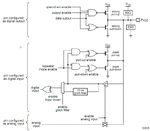shaiko
Advanced Member level 5
My question is about open collector IC outputs.
Is it true that pull up resistors are used with NPN transistors while pull down resistors are used with PNP ?
Is it true that pull up resistors are used with NPN transistors while pull down resistors are used with PNP ?
